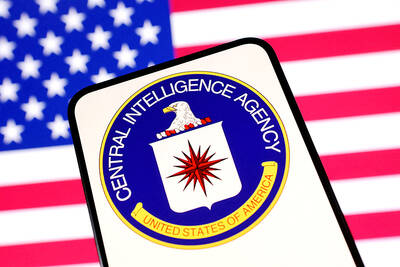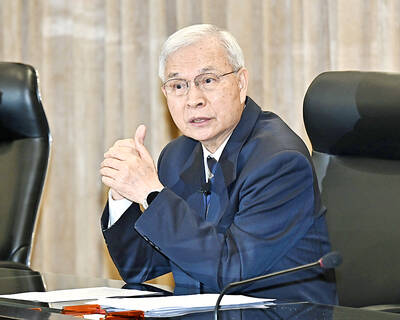China is developing drones to spy on Taiwan, a study from the US-China Economic and Security Review Commission indicates.
“When fully integrated into the force structure, these Unmanned Aerial Vehicles (UAV) will improve the PLA’s [People’s Liberation Army] ability to assess US and Taiwan military force posture and intent and to employ long-range weapons systems,” the study says.
Written by policy analyst Kimberly Hsu and titled China’s Military Unmanned Aerial Vehicle Industry, the study was prepared for the US Congress.
According to the study, Beijing employs UAVs in a wide range of missions, though the extent to which it does so and its level of overall proficiency and integration are unclear.
“The PLA’s focus appears to be on employing UAVs for intelligence, surveillance and reconnaissance and military communication relay, but likely it is developing and operating UAVs for electronic warfare and lethal missions as well,” the study says.
It says that China’s UAV industry has recently made advances in armed UAVs and unmanned combat aerial vehicle (UCAV) development, including those with stealth technology.
“Shorter-range UAVs could perform intelligence, surveillance and reconnaissance on fixed and mobile targets on Taiwan and in the Taiwan Strait,” the study says.
“Depending on their basing and range, some of these UAVs also may conduct intelligence, surveillance and reconnaissance on ships at sea in portions of the East and South China Seas,” the study concludes.
Long-range UAVs could conduct long-duration surveillance at extended distances from China and enable over-the-horizon targeting by PLA Navy long-range anti-ship cruise missiles and the Second Artillery’s DF-21D anti-ship ballistic missiles. They could be particularly useful for detecting, locating, and tracking high-value fixed and mobile targets — such as US Navy ships — throughout the Western Pacific, the study says.
China’s UAV industry is also developing medium-altitude, long-endurance UAVs and high-altitude, long-endurance UAVs.
“When operational, these advanced UAVs could conduct persistent broad-area surveillance capabilities at extended ranges and early-warning during wartime,” the study says.
In addition to fulfilling domestic market demand from the PLA and other domestic customers, Chinese companies appear to be positioning themselves to become key suppliers of UAVs in the global market.
“China’s unmanned aerial vehicle industry is diversifying and expanding,” the study says.
It says that surging domestic and international market demand for UAVs, from both military and civilian customers, will continue to buoy the growth of the Chinese industry.
“Chinese defense firms do not face the same export restrictions as top UAV-exporting countries, such as the United States and Israel,” the study says. “As a result, China could become a key UAV proliferator, particularly to developing countries.”

The CIA has a message for Chinese government officials worried about their place in Chinese President Xi Jinping’s (習近平) government: Come work with us. The agency released two Mandarin-language videos on social media on Thursday inviting disgruntled officials to contact the CIA. The recruitment videos posted on YouTube and X racked up more than 5 million views combined in their first day. The outreach comes as CIA Director John Ratcliffe has vowed to boost the agency’s use of intelligence from human sources and its focus on China, which has recently targeted US officials with its own espionage operations. The videos are “aimed at

STEADFAST FRIEND: The bills encourage increased Taiwan-US engagement and address China’s distortion of UN Resolution 2758 to isolate Taiwan internationally The Presidential Office yesterday thanked the US House of Representatives for unanimously passing two Taiwan-related bills highlighting its solid support for Taiwan’s democracy and global participation, and for deepening bilateral relations. One of the bills, the Taiwan Assurance Implementation Act, requires the US Department of State to periodically review its guidelines for engagement with Taiwan, and report to the US Congress on the guidelines and plans to lift self-imposed limitations on US-Taiwan engagement. The other bill is the Taiwan International Solidarity Act, which clarifies that UN Resolution 2758 does not address the issue of the representation of Taiwan or its people in

US Indo-Pacific Commander Admiral Samuel Paparo on Friday expressed concern over the rate at which China is diversifying its military exercises, the Financial Times (FT) reported on Saturday. “The rates of change on the depth and breadth of their exercises is the one non-linear effect that I’ve seen in the last year that wakes me up at night or keeps me up at night,” Paparo was quoted by FT as saying while attending the annual Sedona Forum at the McCain Institute in Arizona. Paparo also expressed concern over the speed with which China was expanding its military. While the US

SHIFT: Taiwan’s better-than-expected first-quarter GDP and signs of weakness in the US have driven global capital back to emerging markets, the central bank head said The central bank yesterday blamed market speculation for the steep rise in the local currency, and urged exporters and financial institutions to stay calm and stop panic sell-offs to avoid hurting their own profitability. The nation’s top monetary policymaker said that it would step in, if necessary, to maintain order and stability in the foreign exchange market. The remarks came as the NT dollar yesterday closed up NT$0.919 to NT$30.145 against the US dollar in Taipei trading, after rising as high as NT$29.59 in intraday trading. The local currency has surged 5.85 percent against the greenback over the past two sessions, central